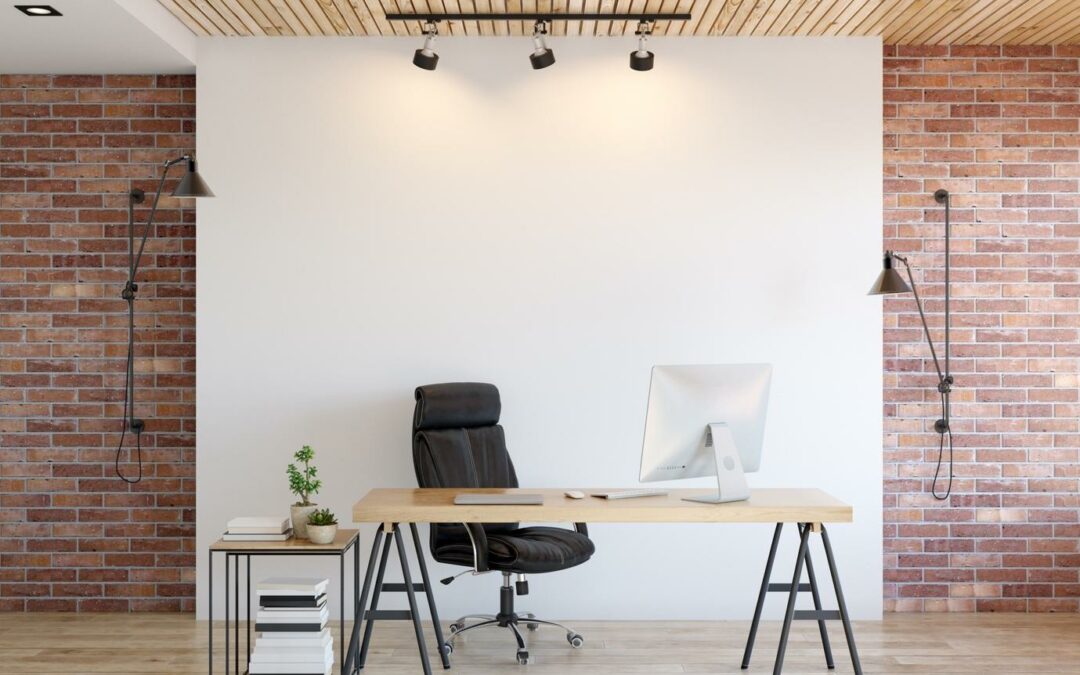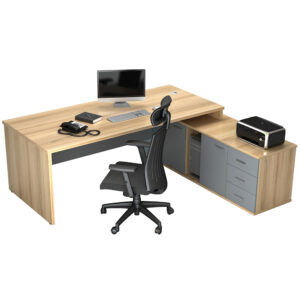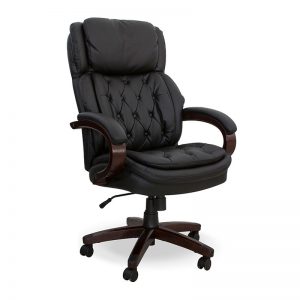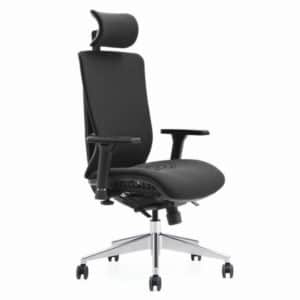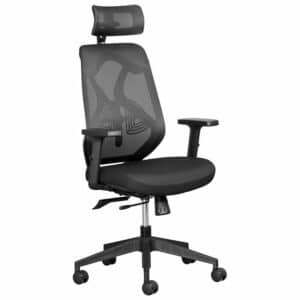Sitting for hours in an office chair can be a true pain in the neck – and back – especially if the chair is uncomfortable. Maybe you are not feeling it yet, but a lot of research confirms that sitting for extended periods in a poor posture or an uncomfortable chair can definitely lead to back pain.
So, to avoid developing or compounding back issues, you need an office chair that is designed to give you support in all the right places and at all the right angles.
The Perfect Office Chair – How to choose?
Time to toss that tatty office chair? Here are essential questions to consider when picking your perfect seating solution.
Is it an adjustable office chair?
Body shapes differ from person to person, and that is why it is good to opt for an adjustable office chair. By changing the seat’s height, the backrest’s recline, and the armrests -you can create a custom fit for your body.
Check that the chair works for your height – you want your hips slightly higher than your knees. The backrest should also be adjustable so that you can sit just a hint back from upright.
Adjustable armrests allow you to find the optimal position for your arms. Fixed armrests can inhibit you from getting close enough to your desk or even achieving the best height.
Can it carry the load?
The last thing you need is your chair breaking – especially on a busy day in the office. Therefore it is helpful to find out what load the chair can take as standard quality desk chairs are built to accommodate a maximum weight of 120 kilograms.
Inexpensive chairs are usually only rated up to 90 kilograms. But heavy-duty chairs are designed to accommodate users who weigh between 120 and 180 kilograms.
Heavy-duty chairs can adjust higher than other desk chairs and are ideal for people who are 190 centimetres and taller. They also have a wider seat cushion and sport stronger padding and castors to handle more weight.

Does it offer great lumbar support and pelvic support?
An office chair that offers good pelvic and back support will promote a healthy posture and ensure that the spine is properly aligned. Great lumbar support helps to maintain the natural curve of one’s spine. And pelvic support should stabilise the pelvis in a position where you don’t tuck or sit on your tailbone.
Is it an ergonomic office chair?
Ergonomic chairs are designed to follow your body’s natural curves to provide you with the support that promotes maximum comfort and a good posture. The design also considers the user’s safety to prevent injuries.
Does the chair have any endorsements?
There are office chairs approved and supported by chiropractic and osteopathic associations – medical authorities who know their way around back pain and its causes.
Is it a cheap chair?
Many people are taken aback by the cost of the best office chairs – but it is important to remember that a quality task chair can serve you for a very long time, especially if the design is backed by years of research and development.
Cheaper chairs are made of cheaper materials that can only take so much hammering. And when you consider how much time you spend in your office chair, you will likely realise that it is a wise investment.
Would a mesh-back office chair work better for you?
If you run hot quickly, a mesh-back on your office chair might just be the thing for you as it allows for ventilation to help keep your back cool.
Is the seat big enough or too big?
A lot of desk chairs have a seat cushion that is simply too big for the average adult user. How do you know it is too big? The edge of the seat will dig into the back of your knees when you sit all the way back.
When the seat is too big, one tends to perch on the edge of the seat with no proper back support. A good rule of thumb is to try and fit 3 – 4 fingers between the back of your knee and the end of the seat when you sit back in the chair with your back supported.
The ideal seat cushion has a tapered edge that slopes down slightly to help get your legs in the best position.

Found the right office chair? 4 Tips for Sitting Properly
Correct sitting posture
Although office chairs can be adjusted to help you maintain better posture, you have to make an active effort to sit in the most optimal position.
When we slouch and bend our upper back, we add unnecessary spinal stress – so make sure your upper back is straight and that your lower back curves with the shape of the lumbar support on the chair. You can do this by pushing your hips all the way to the back of the seat.
Find the right seat height that allows your feet to be flat on the ground with your knees in line with your hips or slightly lower. If your legs can’t reach, consider getting a footrest – something as simple as a crate or sturdy cardboard box could work – just make sure your knees are at a 90-degree angle.
And relax your shoulders. Our body’s typical response to stress is to cause tightness in the trapezius, but you can place your shoulders in a neutral position by simply pulling them up to your ears and then relaxing them to where they would normally hang. Then pull the shoulders back and down.
Make your workstation more comfortable
A large part of sitting correctly in an office chair depends on the positioning of the workstation and the items on it. Ideally, your desk should be high enough for your chair and armrests to fit underneath it. When seated, the desk should be at the height of your forearms.
To keep your neck in a neutral position, your eyes should be aligned with the top part of the screen. Those wearing varifocal or bifocal glasses may need to lower their monitor slightly.
Take regular breaks
Sitting impacts blood circulation, and after about 20-30 minutes, the blood flow to your brain decreases – luckily, this is easy to fix with regular breaks where you stand up or move around.
Our eyes also take a beating from staring at that flat screen for hours and hours, so remember to give them a break as well by focusing on something that is about 20 metres away.
Avoid crossing one leg over the other
Sometimes we try to relieve the pain in our body by sitting at weird angles. More often than not, that just leads to increased pressure and strain on our bodies.
Therefore, crossing one leg over the other leg on the ground is not a good idea. This position applies direct pressure on the peroneal nerve that sits at the back of the knee. Over time, this position can injure the nerve and lead to peroneal palsy.

The best office chair?
Today’s wide variety of desk chairs can make it a daunting task to choose the office chair that provides maximum comfort. But if you know what you are looking for, it can make your search for the best office chair a lot easier.
Take a seat in your current desk chair and assume good posture – as outlined in the article above. Note the problem areas.
You can work your way up and ask yourself: Are my feet flat on the ground? Are my knees lower than my hips? Are the tops of my arms parallel to my spine? etc. If the answer is no or not really – then these are the things to take note of when shopping for your new office chair. Because, at the end of the day, the best seating solution is the one that meets your specific needs.
Let us help you find an office chair that works as hard as you do. Take a look at our selection of office chairs.
